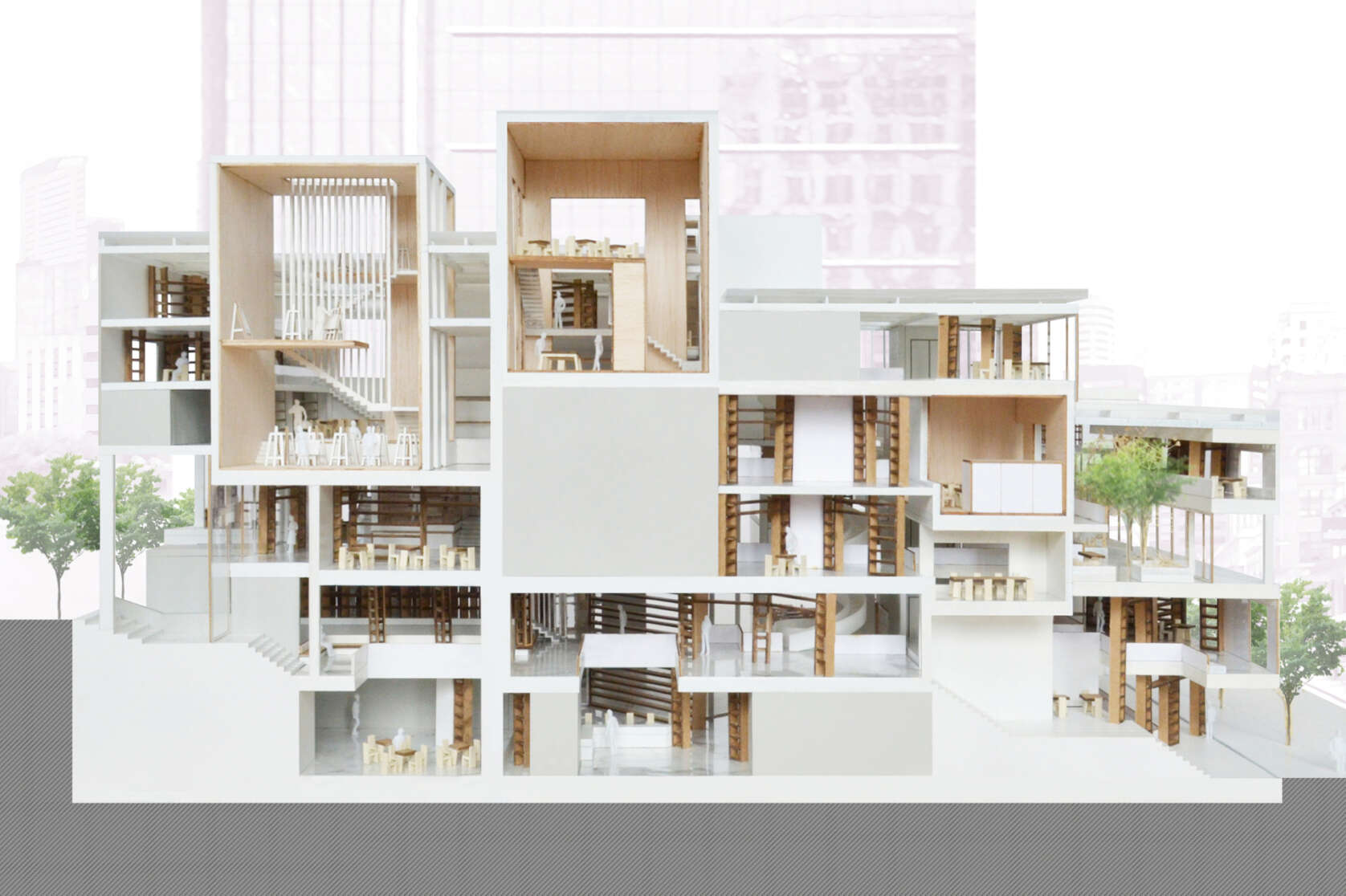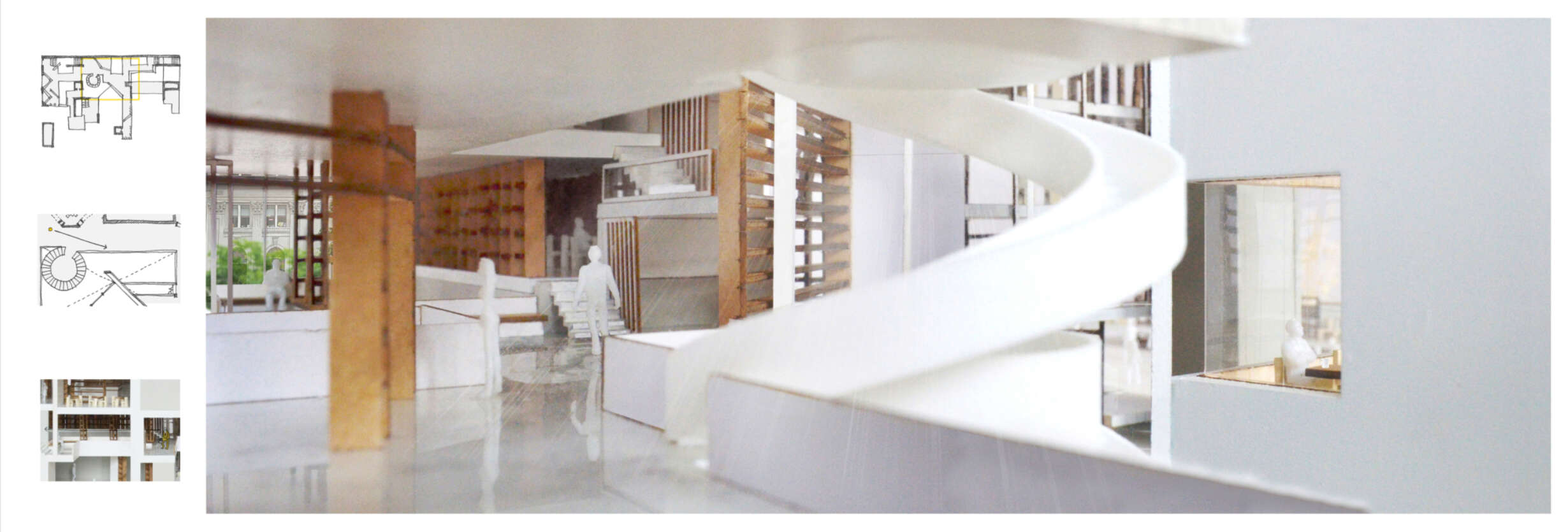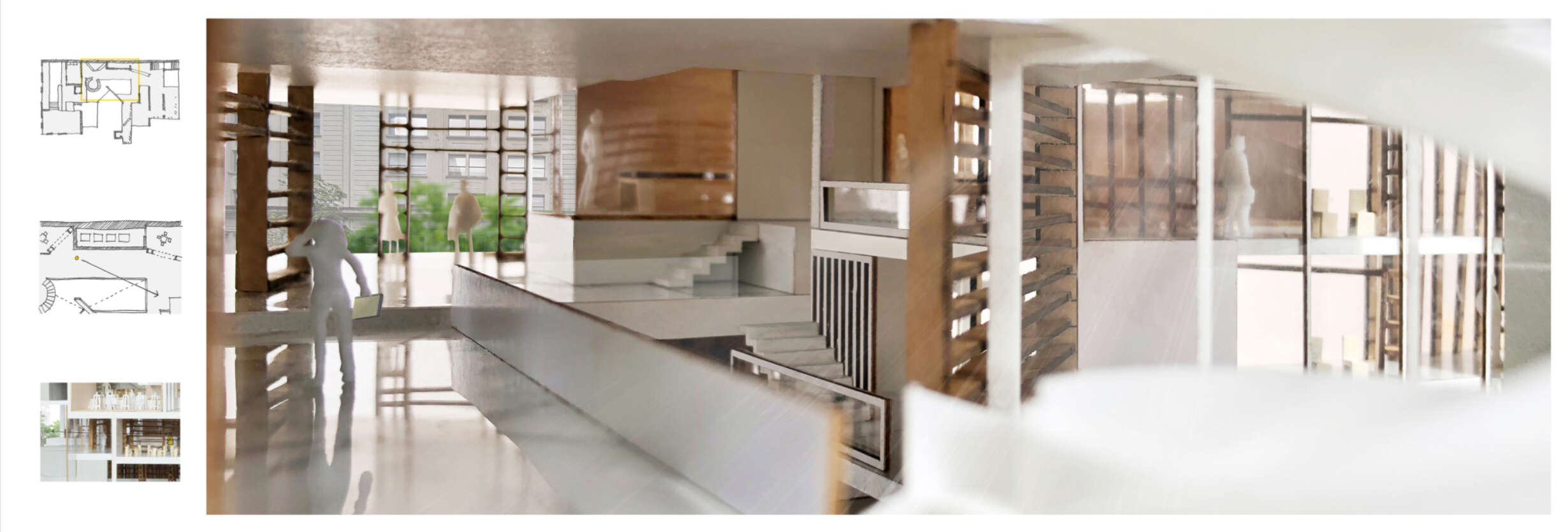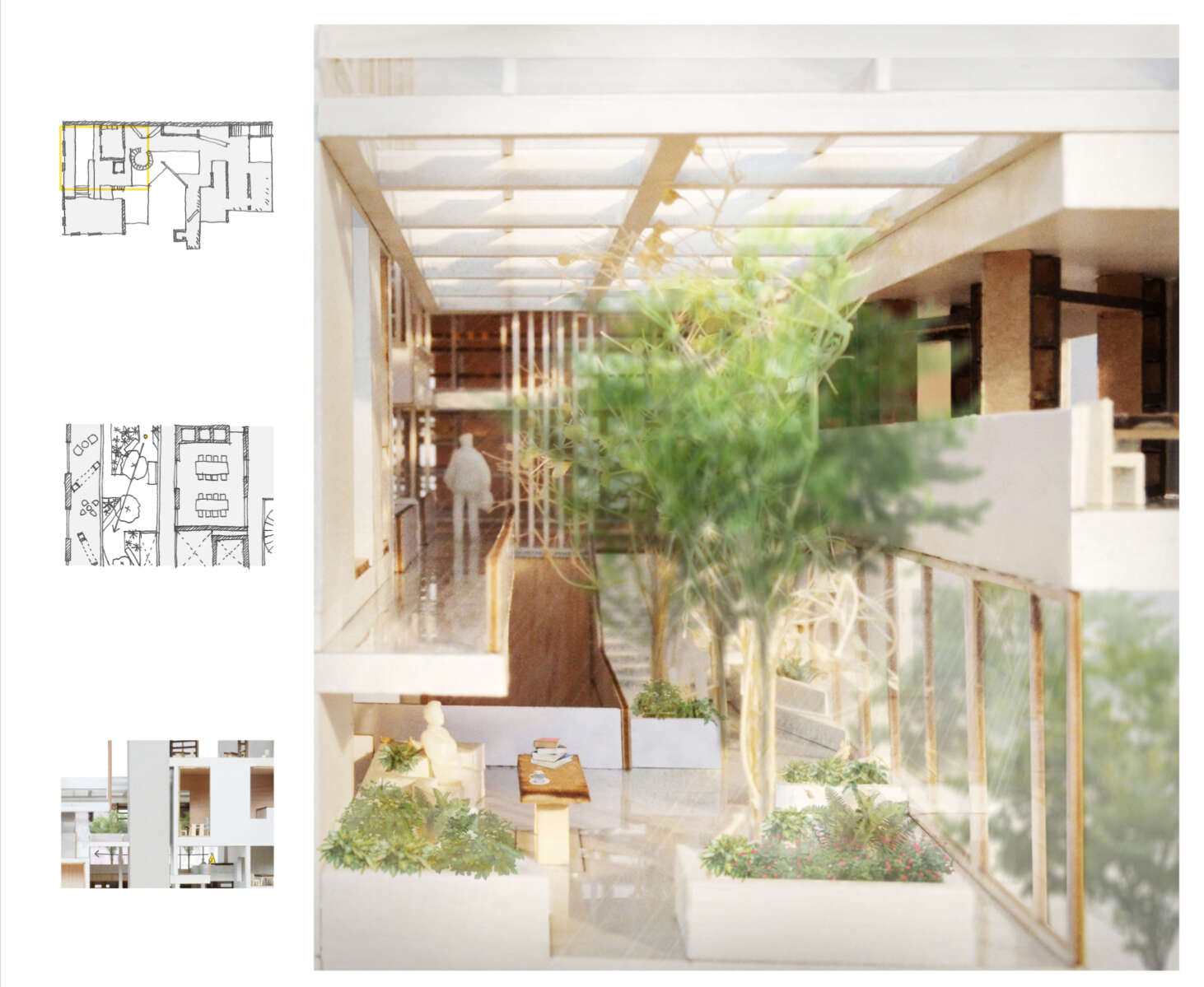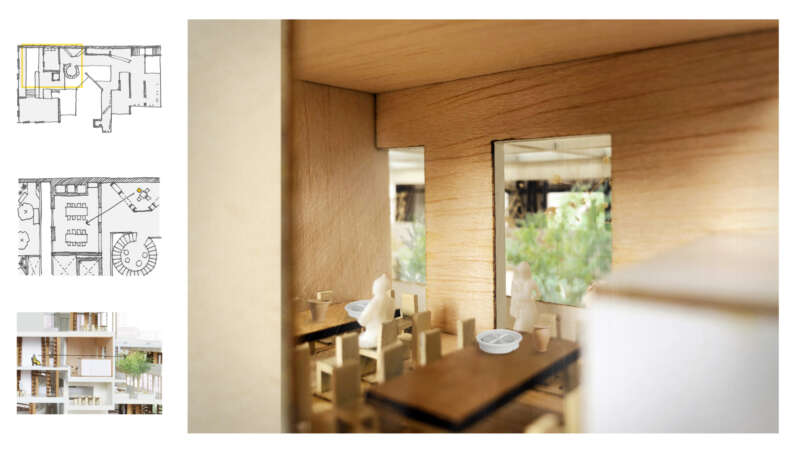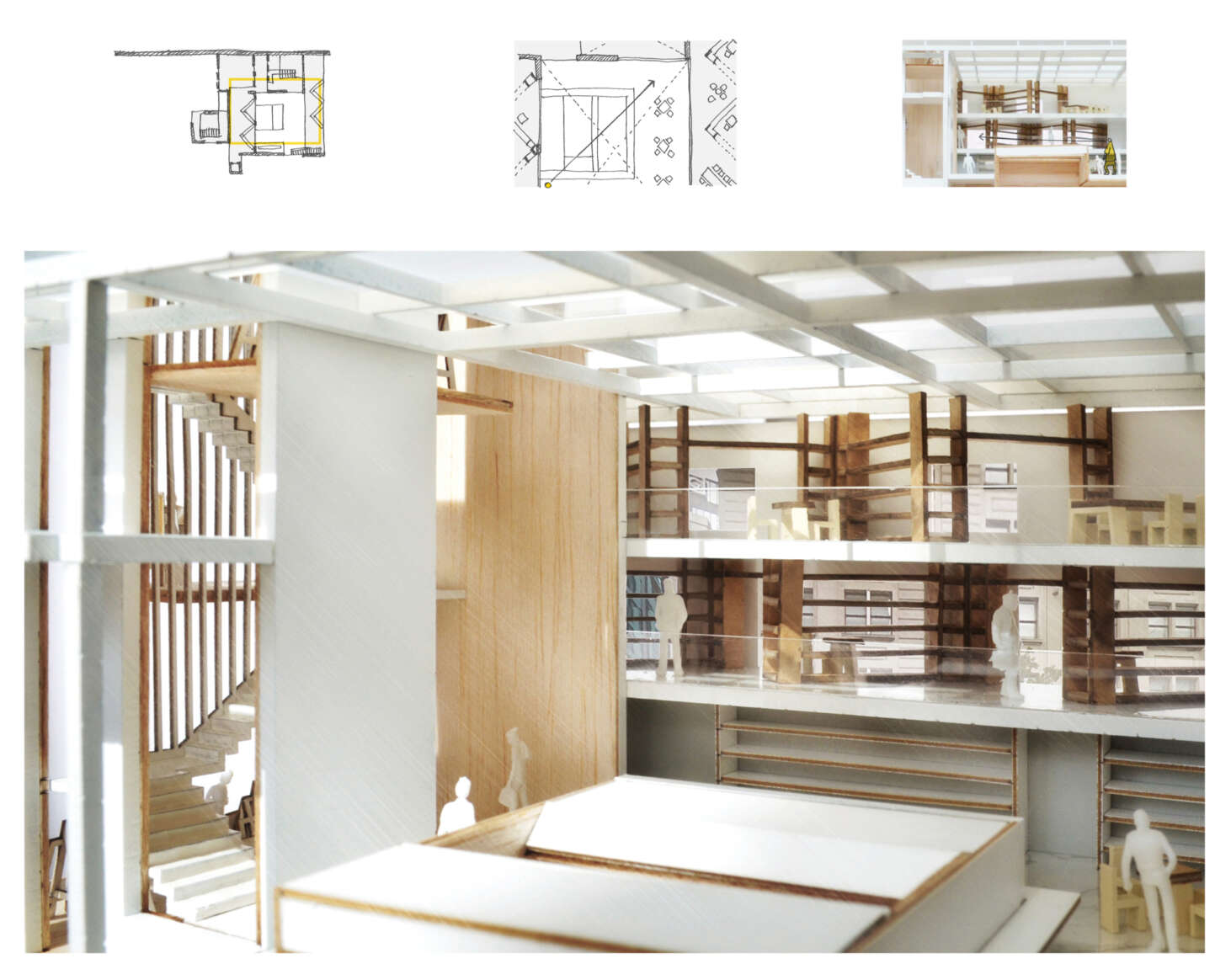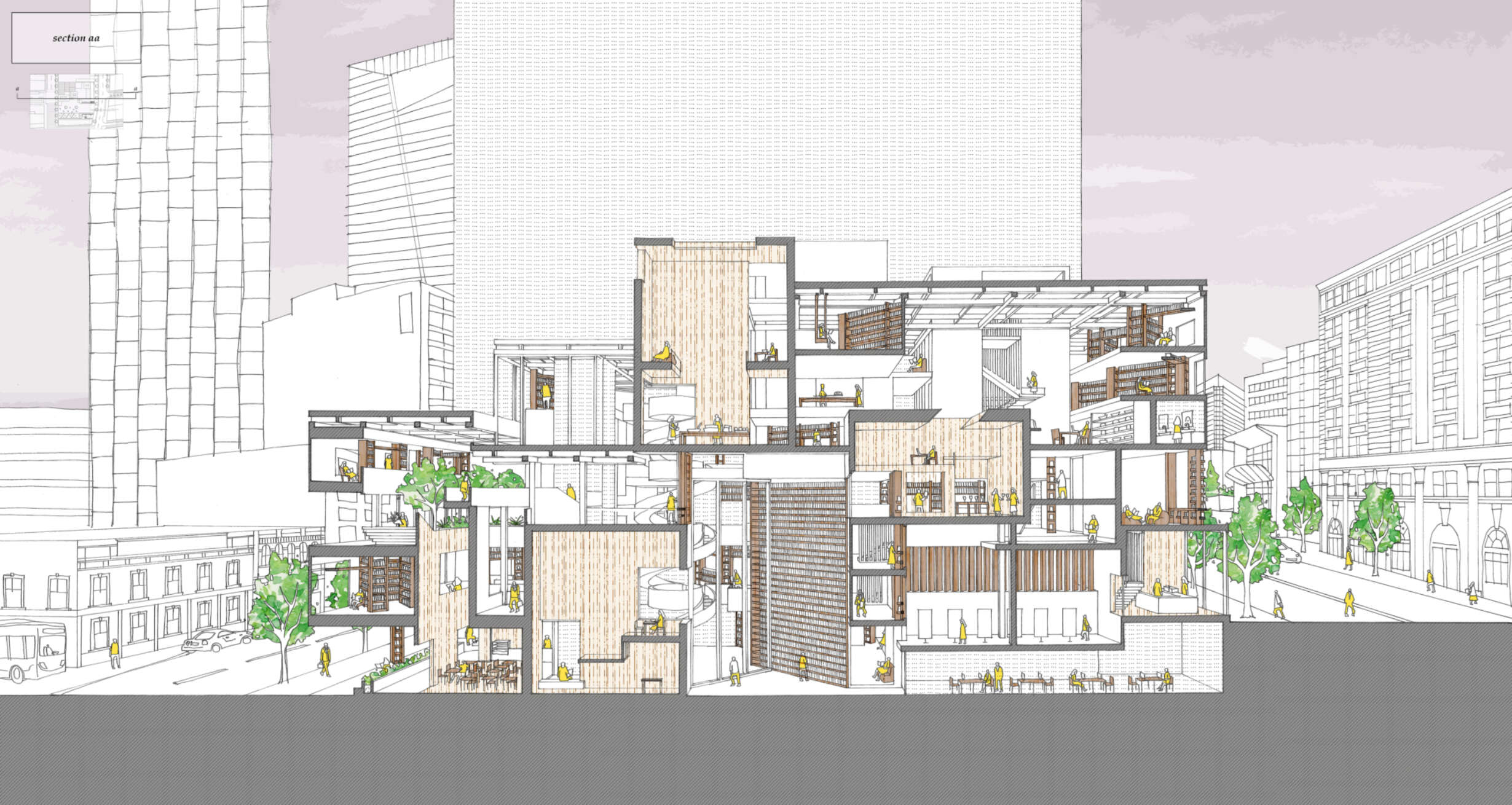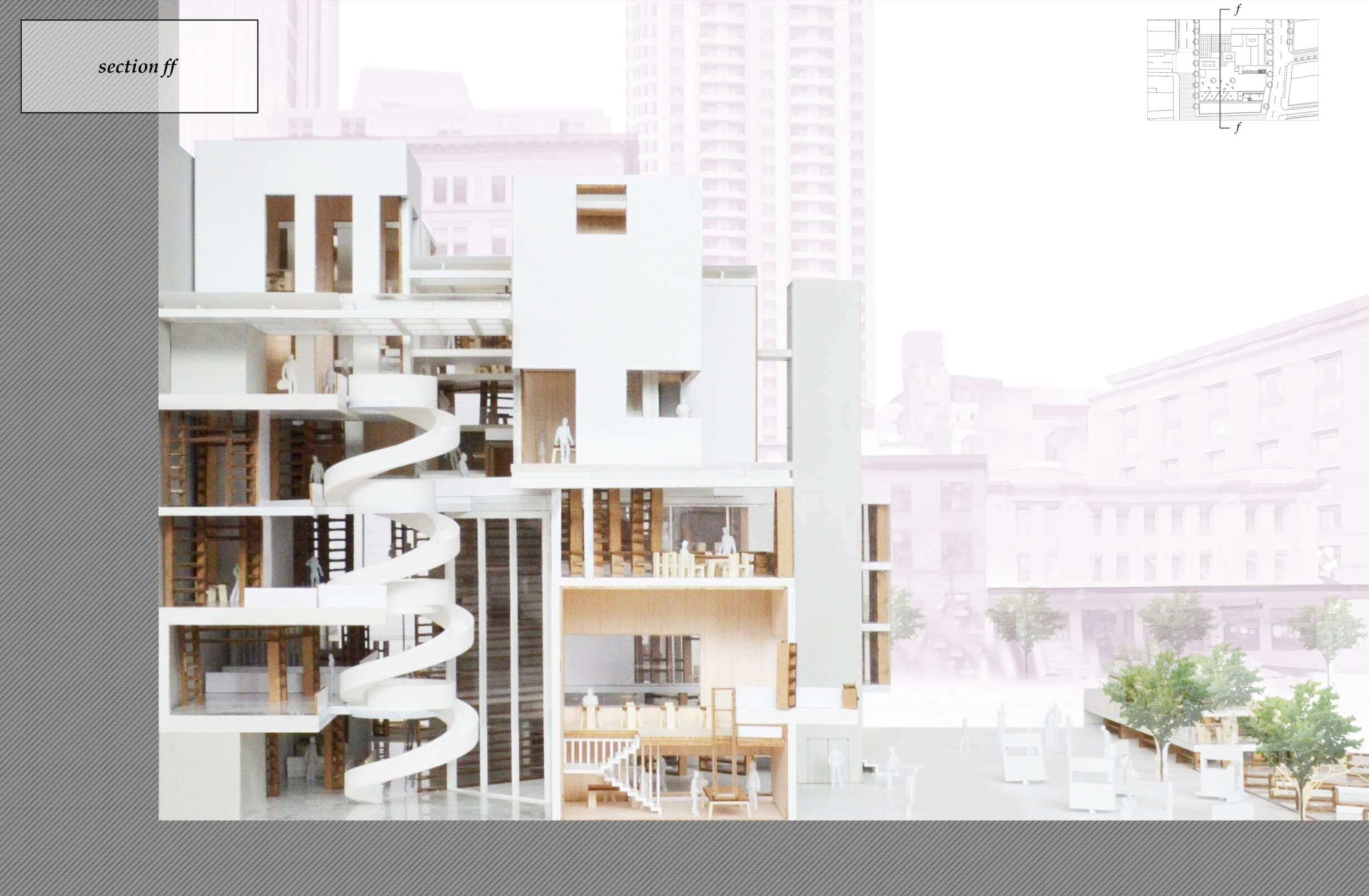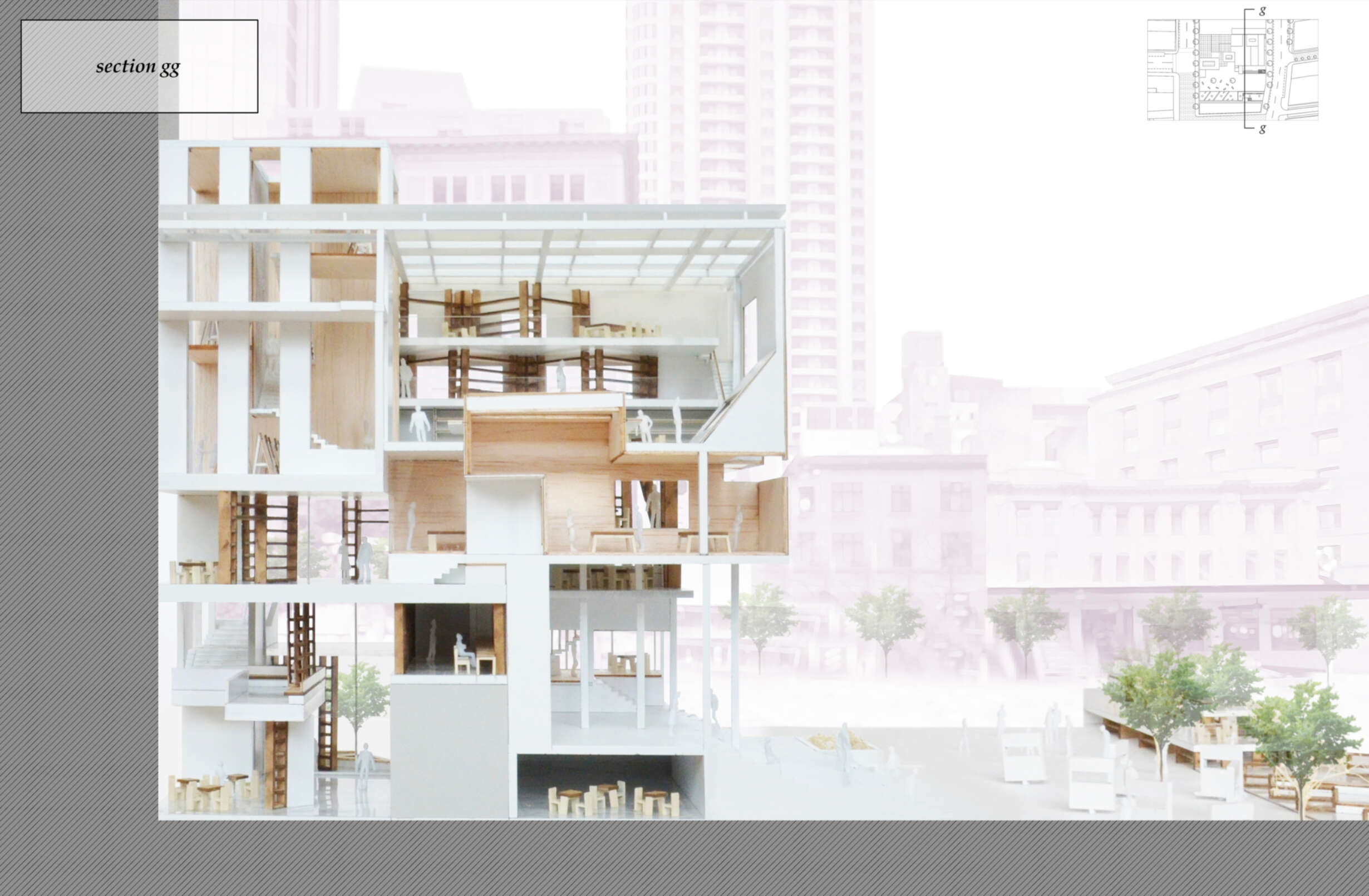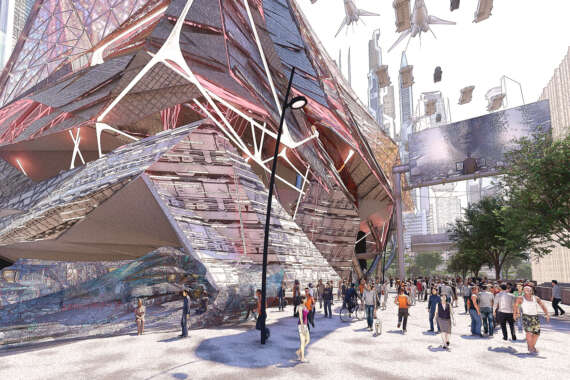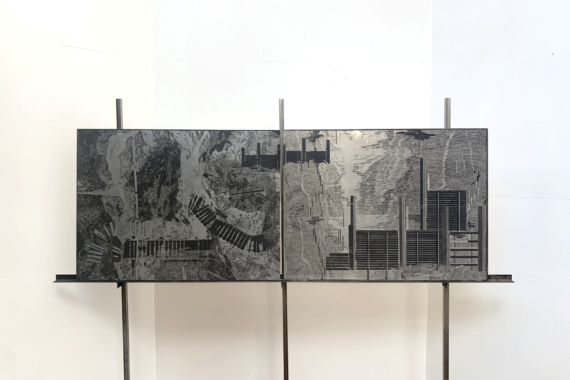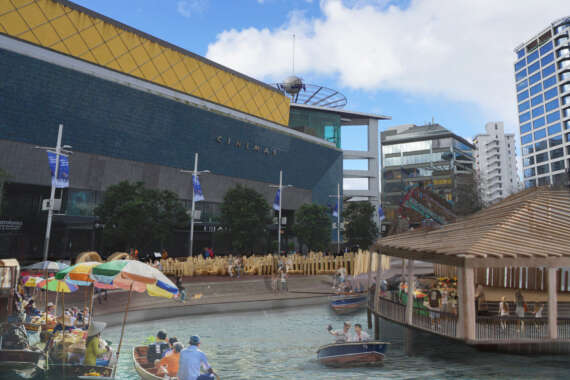The city’s high density creates a lot of sights. Sights from the street into a shop, from an office window into the opposite window, from a mezzanine into an atrium. We design buildings and cities to achieve our demands, and these built forms have become stages for us to watch, to connect with our surroundings. Architectural openings direct how we can look into our surroundings, and the fact that watching is often unintentional indicates the nature of our curiosity. The way we design these openings could be meaningful to enrich urbanites’ lives. A window is defined as, ‘an opening, especially in the wall of a building for admission of light and air that is usually closed by casements or sashes containing transparent material and capable of being open and shut.’ Yet, we have extended our definition of window beyond its initial purpose as we access the other side of window with our sight.
This thesis is a perception based architectural experiment to design a public library as a ‘third place’. It pursues answers to the question of how the mechanisms for watching can be used to architecturally reconnect individuals in the city. How can windows be used comfortably and make cities less lonely by directing what urbanites watch?
This thesis manipulates space like Edward Hopper’s paintings by orientating how people watch, controlling the proximity to what they watch, and articulating the thresholds through which they watch. Watching can be made comfortable in the city.
